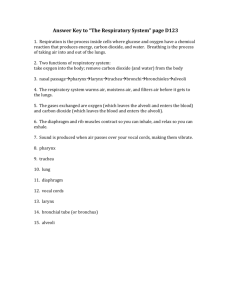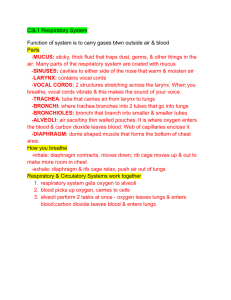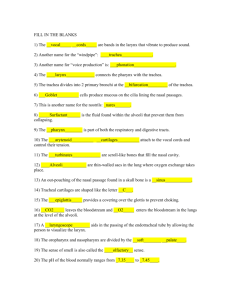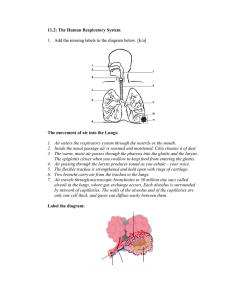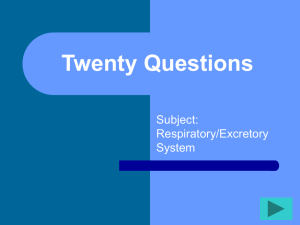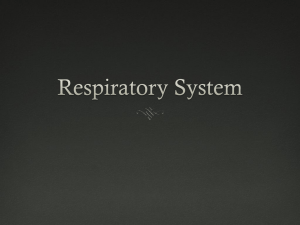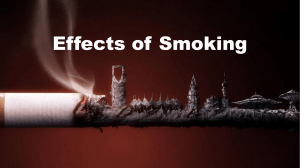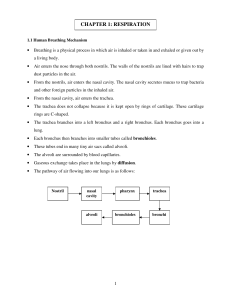RESPIRATORY SYSTEM
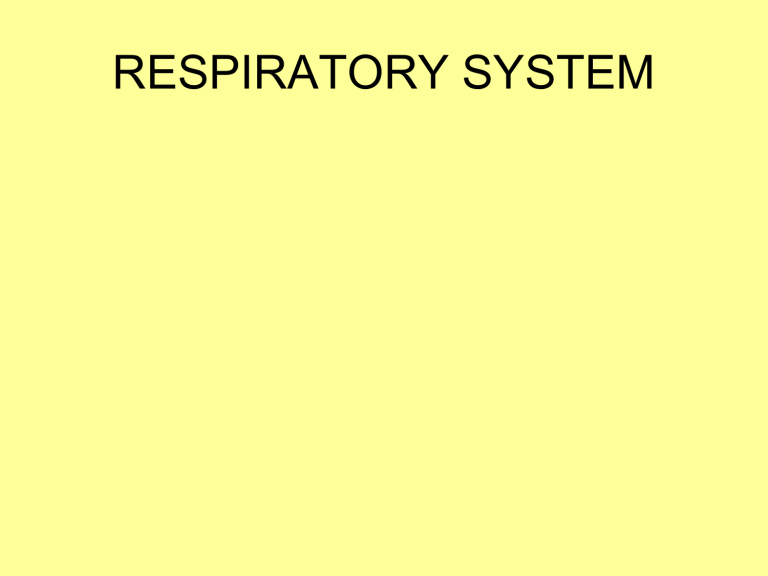
RESPIRATORY SYSTEM
• Pathway of inhaled air: nasal cavity pharynx
larynx trachea bronchi bronchioles alveoli
• Nasal cavity
– Hairs and mucus filter particles, pathogens
– Warms and moistens inhaled air
– Contains olfactory bulb
• Pharynx
– Passageway that connects nasal and oral cavities
• Glottis
– Space between the vocal cords; opening to larynx
• Larynx – voice box
– Moves up to epiglottis to close trachea when swallowing – you can feel this
– Contains vocal cords
• Vibrate when speaking
• Loudness: air pressure
• Pitch: thinning of vocal cords is higher pitch
• Normal bacterial and fungal flora here
Lower Respiratory Tract
• Bronchial Tree
– Trachea branches into two bronchi (L & R)
– Continued branching of bronchioles
– Each ends in cluster of alveoli
• Alveoli in the Lung
– Thin-walled, rounded sacs surrounded by capillaries
– Gas exchange takes place here
– Surfactant counteracts water surface tension
• The alveoli of human lungs are lined with a surfactin that keeps them open and therefore functional
• A surfactin is a thin layer of lipoprotein that lowers the surface tension of water
• Infant respiratory distress syndrome
• Gas exchange
– Most of O
2 carried in red blood cells
(hemoglobin)
– Most CO
2 carried in blood plasma ( as bicarbonate)
– Direction of flow opposite in lungs – O
2 diffuses out of alveoli into the blood stream;
CO
2 diffuses out of the blood stream into the alveoli
• Breathing
– Lungs do not work; inflate and deflate passively
– Changes in chest cavity size vary pressure
– Diaphragm
– Intercostal muscles (between ribs)
• Lung Volumes
– Normal breaths = tidal volume
– Forced breathing (much larger volume) = vital capacity
– Lungs never completely empty: residual volume
– Total lung capacity = vital + residual
– Approximately 6 liters for men, 4.2 for women
• Exercise
– Muscles work, use oxygen for cellular respiration
– Carbon dioxide and heat are produced
– Carbon dioxide bicarbonate in blood
(acidity)
– Sensed by medulla (brainstem)
– Breathing signals increased, pulse/blood pressure increase
– More oxygen circulated faster to tissues
– When muscles stop, lag time as breathing, pulse, carbon dioxide concentrations return to normal
– Do you consciously control breathing?
Diseases of the Respiratory tract
• Pneumonia – viral, bacterial, fungal
– Inability of the lining of the lung to get rid of fluid – interferes with gas exchange
– Inflluenza virus
– Pneumocyctis jiroveci
– Streptococcus pneumaoniae
– Klebsiella pneumaniae
• Tuberculosis – bacterial – Mycobacterium tuberculosis

